List of Authors
>>About this blog
Recent blog post
|
[Marsha Horiuchi of Edo]
October 29, 2015 18:00
After a cup at Betara-shi @ Otemmacho of Takarada Ebisu Shrine, we stopped by Bakuro Yokoyamacho on the east side.
Since the Edo period, as a post town close to Asakusa Gomon, which was a major downtown area at the time (some Bakuro who bought and cared for horses).
And it has developed as a wholesaler town for many goods, and now it is a town that is working hard as a clothing wholesaler town.
On October 1, a 7-story 71-bed hostel "IRORI" opened in a corner of a building in the wholesaler's street.
There is a single / two-tiered bed made of Shimanto cypress, partitioned by a cloth that is good at wholesalers, and a self-catering kitchen.
"Irori," which can be surrounded by everyone and sometimes becomes the protagonist, sits in the lounge with a chocolate and ash.
It is a place where you can feel such a simple and quiet appearance. (3,000 yen per night)
It seems to be popular with foreign backpackers, people who are accustomed to traveling, and Japanese who stay suddenly.
In the evening lounge, foreign tourists enjoy blogging while using Wifi, and the two women's group light coffee.
While drinking, chatting while drinking, the Japanese were quietly hitting the PC keyboard.
I feel that the new landscape of Nihonbashi is expanding.
IRORI URL http://irorihostel.com/
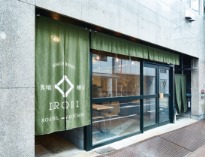 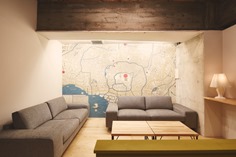
 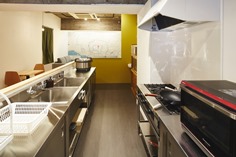
 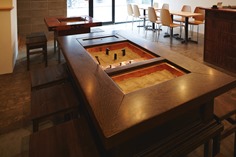
[Nojinya]
October 28, 2015 09:00
There are only two months left in 2015, and November is a season when events such as school cultural festival, including cultural day (holiday), but in Chuo-ku, this weekend (November 1), the whole Chuo-ku museum is held once a year. Poster information has already been posted on the bulletin board in the city.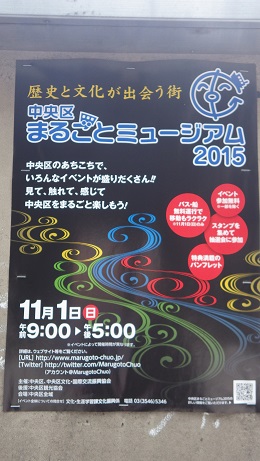
The whole museum is held for the eighth time this year, but it is a day like a museum where you can enjoy the various charms of Chuo-ku, as the name suggests, centering on official events held in various parts of the city. In addition to events that convey the history and tradition of 400 years since the opening of Edo, events unique to Tokyo and Japan, such as contemporary and future events, art (exhibitions, performances), environmental activities, barrier-free, etc. (For details of the event, please refer to the information on the Marugoto Museum website at the end of the sentence.)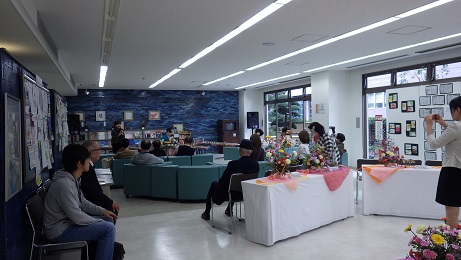
(The "Chuo Kumin cultural festival" lobby concert last year. Tsukiji Social Education Center
The venue will be a large area of the entire ward, but on the day, in addition to regular public transportation, free patrol buses (turn left, turn right), boat routes (including 4 routes, tour routes), Edo buses (Free on the day!) There is no need to worry about moving. If you participate in stamp rally, collect three or more stamps at the event venue and fill out the questionnaire, you can also participate in the prize-winning raffle.

(The state of last year's patrol bus stop (Tsukiji). Staff wearing orange wear will guide you to you.
Finally, let me know. The patrol bus goes around a route where public transportation such as the metropolitan bus does not pass much, so it is a chance to discover a new Chuo-ku from the train window. In addition, a correspondent of the Chuo-ku Tourism Association will guide you on the bus, so you may be able to hear special tourist information. 。 。
Please look forward to it!
[Marugoto Museum in Chuo-ku]
Date and time: Sunday, November 1 9:00 am to 5:00 pm
Location: The whole area of the city. For more information, please visit our website.
Marugoto Museum website: http://marugoto-chuo.jimdo.com/
Valuable Information| Other areas| Event Information| Ningyocho, Hamacho, Higashinihombashi area| Tsukuda, Tsukishima, Kachidoki and Harumi areas| Nihonbashi, Kyobashi and Yaesu areas| History, culture| Correspondent's recommended information| Tsukiji, Shintomi, Minato area| Kayabacho, Hatchobori, and Shinkawa areas| Ginza area
Page top▲
[Nojinya]
October 13, 2015 09:00
A friend from Xi'an who came to Japan for sightseeing decided to return after a two-week private trip. Actually, I wanted to send it to the airport, but I couldn't take a break on weekdays, so I decided to see it off at the bus stop bound for Narita Airport near Tokyo Station.
There are trains (Narita Express, Keisei Skyliner) and airport buses to access Narita Airport from Tokyo, but since 2012, LCC  has begun full-scale operation in Japan, and in addition to the airport limousine bus from Hakozaki TCAT, the cheap express bus (LCB) that departs from around Tokyo Station has started. has begun full-scale operation in Japan, and in addition to the airport limousine bus from Hakozaki TCAT, the cheap express bus (LCB) that departs from around Tokyo Station has started. 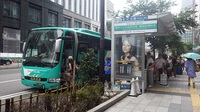 Today, I would like to introduce the LCB departing from Yaesu, which I interviewed when sending a friend, and its waiting room. Two LCBs are operated from Yaesu, the gateway to our Chuo-ku. One is "THE Access Narita". It is operated by Heiwa Kotsu and JR Bus Kanto, departs Ginza Sukiyabashi-mae bus stop and connects to Narita Airport via Tokyo Station Yaesu Exit JR Express Bus Terminal (Chiyoda-ku) for 1,000 yen. Today, I would like to introduce the LCB departing from Yaesu, which I interviewed when sending a friend, and its waiting room. Two LCBs are operated from Yaesu, the gateway to our Chuo-ku. One is "THE Access Narita". It is operated by Heiwa Kotsu and JR Bus Kanto, departs Ginza Sukiyabashi-mae bus stop and connects to Narita Airport via Tokyo Station Yaesu Exit JR Express Bus Terminal (Chiyoda-ku) for 1,000 yen.
The other is the Tokyo Shuttle. It is operated by Keisei Bus, and it is also 1,000 yen from Keisei Bus No. 3 bus stop (Chuo-ku) along Sotobori-dori St. (Departure auline Net / Rakuten Travel, in which case it is discounted to 900 yen).
There are more than 50 round trips a day each (3 companies operate 164 round trips per day), and in particular, LCB2 also operates late at night for LCC's early morning flights, so its convenience and low fares (about 1/3 of limousine buses), and it seems that there are quite a lot of tourists not only from Japanese but also from overseas. On the other hand, as the number of users increased, the ride was not a fine bus terminal like TCAT, but a bus from a bus stop that was blowing, so it was a bit difficult to wait for the bus when the rain and wind were strong.
In response to such users' voices, each LCB has a bus waiting room since last year. In the case of THE Access Narita, with the commencement of joint operation with JR Bus Kanto from December last year, the Narita Airport departure platform (until then) moved from the bus stop along Yaesu Street to the JR Express Bus Terminal No. 7 bus stop, users will be able to use the JR Express Bus Waiting Room under the Grand Roof of Tokyo Station.
In July last year, the Tokyo Shuttle also installed the Keisei Express Bus Lounge on the 1st and 2nd floors of the Yaesu Rotary Building along Sotobori-dori St. 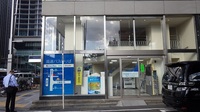 The Keisei Express Bus Lounge is available from early morning to late night. There are benches The Keisei Express Bus Lounge is available from early morning to late night. There are benches where you can sit comfortably and wait until the bus departure time, as well as vending machines for drinks and toilets where you can sit comfortably and wait until the bus departure time, as well as vending machines for drinks and toilets . .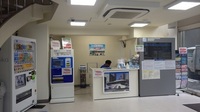
LCC launches not only from overseas but also from all over Japan (Kansai, Fukuoka, Sapporo, Takamatsu, etc.) are increasing year by year, and I think the use of LCC via Narita Airport, where LCC dedicated Terminal 3 has been established, will continue to increase in the future. Chuo-ku is directly connected to Narita by LCB, and it seems that more and more visitors from Japan and overseas can be expected in the future. We correspondents want to continue to introduce secret places that will allow such customers to enjoy Chuo-ku more.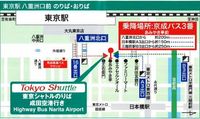
[Keisei Express Bus (Tokyo Shuttle) Lounge]
〒1-7-17 Yaesu, Chuo-ku, 103-0028 Yaesu Rotary Building 1F and 2F
(As soon as you leave Exit 18 from the Yaesu underground shopping mall)
Business hours 0400 (early morning) - 0200 (late night)
*The Tokyo Shuttle takes the Sotobori-dori St. in front of the lounge, about 150 meters north of the communal building (Keisei Bus No. 3) (see the map above).
[Nojinya]
16:00 on October 6, 2015
Earlier, blog article "Chuo-ku version Vélib (community cycle) started! (/archive/2015/10/velib.html) The community cycle (CC) in Chuo-ku has started, so I immediately used it on the first day of October 1. However, today's work on weekdays, so it's not for sightseeing but for commuting.
Since you have already registered as a member at the promotion of the Chuo-ku government office, first access the CC homepage (http://docomo-cycle.jp/chuo/) at home and check the "number of available bicycles" on nearby ports To do. Eight cars are available, so make a reservation at the port (B01) of Tepposu Children's Park, and leave the house after 8:45, the same as usual attendance time, and head to the port. When I put the bicycle number and passcode sent by e-mail at the same time as the reservation, the electronic lock opened and the bicycle could be withdrawn from  the rack. the rack.  I'll start running on a bicycle right away. I'll start running on a bicycle right away.
I was a little worried about running on the road because the wheels are small, but since there is an electric assist, it is enough speed to run on the road with just a little rub (by the way, stop immediately when driving on the sidewalk Please note that it is the rule to slow down (decrease enough speed) (Article 2, Paragraph 1, Item 20 of the Road Traffic Act, Article 63-4, Paragraph 2)!) 。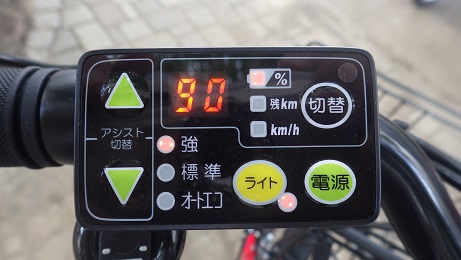
During this time, the roads are often congested, and it often takes about 15 minutes by taxi or bus from the Minato / Hatchobori area to Yaesu, but today it takes about half the 7 minutes I arrived at Kyobashi. On the way, there were obstacles such as cars parked and stopped on the street, but the cycling was generally good.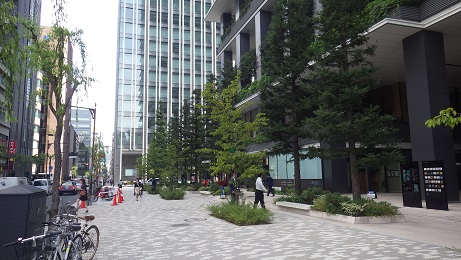
Insert your bicycle into the rack (B02) of Tokyo Square Garden Port along Yanagi-dori St., lock it and return it!
You can borrow it whenever you like and return it at your favorite place. 。 。 As the name of Vélib (Buddha: Bicycle + Free), the pleasure of sightseeing in Chuo-ku has increased by one, and I'm looking forward to using it on the weekend from now on.
[Nojinya]
14:00 on October 1, 2015
Since it started in Paris in 2007, the Japanese version of Velib, which has spread throughout France, Spain, U.K. and Italy, will begin in October in Chuo Ward. Prior to the start on October 1, promotions and free trial rides are being held at Chuo-ku government office and Tsukishima branch office.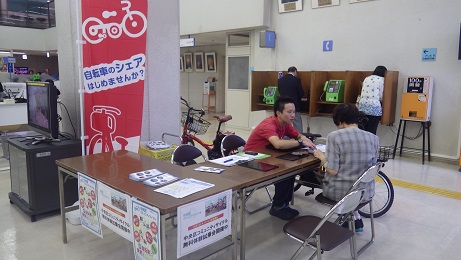
The Community Cycle (CC) or Velib is a 24-hour bicycle rental system provided by local governments, etc., with multiple ports (bicycle rental stations) in the area mainly for reducing the use of cars, By registering in advance, it is a service that allows tourists to rent a bicycle wherever they want and return it at their favorite place. Short-term use of less than 30 minutes is possible, so it can be used for commuting and going to school, and one bicycle can be shared by multiple people, which is also an issue in Japan. Is expected. It promotes the use of bicycles that are friendly to the global environment, and it can be said that this is a measure suitable for Chuo-ku (/archive / 2015/07/post-2597.html) that promotes the eco-town concept based on the Kyobashi Environmental Station. .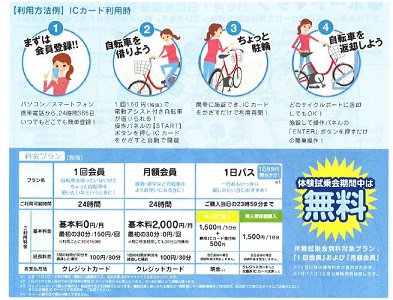
You will be rented a chic electric bicycle with two colors of red and black. Velib is a coined word created by the combination of French "vélo" and "libre", but it is expected to be an option for residents and tourists to freely enjoy Chuo-ku along with the Edo bus.
Initially, it seems that it will start from 18 ports (bicycle parking / rental offices) such as Chuo-ku government office, Tokyo Square Garden, Triton Square, Jisshi Park, but there is a plan to increase the number of ports in the ward according to the usage situation In addition, it seems that there will be no convenience in sightseeing with the CC such as Koto-ku, Chiyoda-ku, Minato-ku, etc., which has already been introduced, which has been introduced.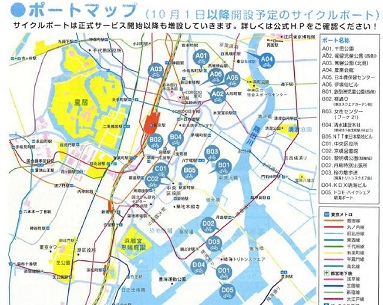
However, be careful when driving because the maintenance of bicycle lanes is still delayed in the ward (do not become both perpetrators and victims)!
1
|
Links
|













 I'll start running on a bicycle right away.
I'll start running on a bicycle right away.




